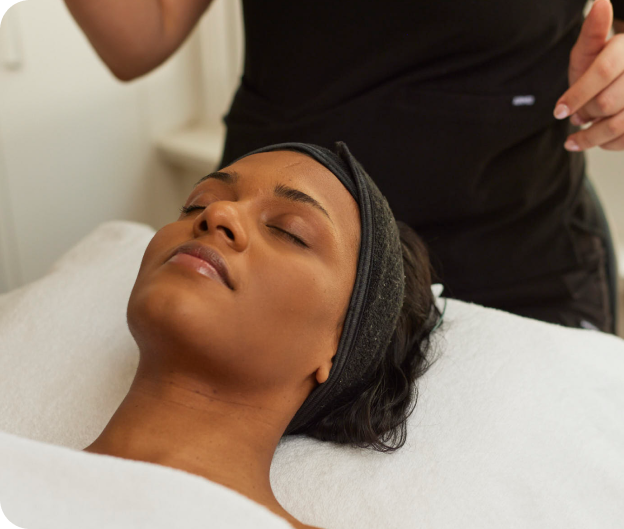Keratosis pilaris is a chronic skin condition characterised by small, papular bumps. It is most often seen on the upper arm, thighs and buttocks and can appear on the face and trunk. The condition appears in 50-80% of adolescents, and in 40% of adults. Keratosis pilaris most often emerges in early childhood, intensifies during teenage years, and may improve with age.
It is a very common dermatologic skin condition and is associated with atopic dermatitis. Although the condition is chronic, it is not harmful.
The cause of the condition is not known, however it’s association with atopic dermatitis suggests a loss of normal barrier function is at play.
The small bumps seen in Keratosis pilaris are thought to be the result of skin cells building up in the opening of the hair follicle, creating a ‘plug’ like blockage. The plugs can cause redness and scaliness around the opening of the follicle.
Unfortunately there is no cure for Keratosis pilaris, however it can be managed with topical skincare. Treatment of Keratosis pilaris should help to soften the skin and improve the texture.
Keratolytic agents such as lactic acid, salicylic acid or urea will help to improve the skin by gently exfoliating the skin. Normal skin has the ability to shed dead skin cells. In Keratosis pilaris skin cells are held down by adhesive bonds which prevent shedding from happening. Keratolytic ingredients help to release these adhesive cellular bonds, and in turn this helps to smooth and soften the skin. Retinoids can also be used as they help to reduce build up of skin and can regulate cell turnover.
Products containing either 10% lactic acid or 5% salicylic have been shown to improve Keratosis pilaris when used twice daily.
For this we recommend either the PCA Body Therapy moisturiser, which contains Lactic acid.

Another great option is the BiRetix Triactive gel which contains AHAs, Salicylic acid and retinol.

A hypoallergenic moisturiser should be used to prevent the skin from drying out and to help maintain skin barrier function. This will help to soften the skin and reduce the likeliness of irritation.
Having an occasional chemical peel in conjunction with your skincare is also a great way to keep the skin in top condition. Clinical peels provide your skin with a higher dose of keratolytic ingredients, which will help to keep your home care working as best as possible.
Finding the right place to start in treating Keratosis Pilaris can be tricky.
Our Dermal Clinicians can help devise the right treatment and skincare plan for you.
Book in for a consultation, call 95274209 Or email cosmetic@skindepth.com.au
